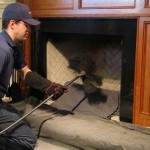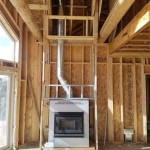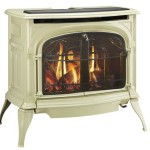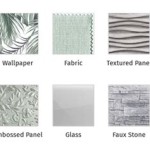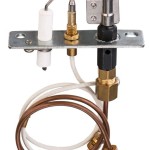Elevating Your Hearth: A Guide to Fireplace Decorations
The fireplace, historically a functional necessity, has evolved into a prominent focal point within the modern home. Serving as a visual anchor, it offers opportunities for creative expression through thoughtful and strategic decoration. The decorations chosen can reflect personal style, complement the existing interior design, and evoke a desired ambiance, be it cozy and rustic or sleek and contemporary. This article will explore various approaches to fireplace decoration, outlining key considerations and providing practical suggestions to enhance the aesthetic appeal of this central feature.
Before embarking on any decorating endeavor, it’s crucial to assess the existing fireplace structure and surrounding space. Factors such as the mantel's size and style, the material of the fireplace surround (brick, stone, tile, or wood), and the overall dimensions of the room will significantly influence the choice of decorations. A grand, ornate fireplace might necessitate simpler, less cluttered decor to avoid overwhelming the space, while a minimalist fireplace could benefit from bolder, more striking elements to create visual interest. Moreover, the functionality of the fireplace must be considered. Decorations should not obstruct the firebox opening or pose a fire hazard. They also should not impede the natural airflow around the fireplace.
The style of the home is another critical consideration. A traditional home might call for classic, timeless decorations such as antique clocks, framed artwork, and candlesticks, while a modern home might benefit from minimalist sculptures, abstract paintings, and geometric accents. Consistency within a design scheme ensures that the fireplace decorations contribute to the overall aesthetic harmony of the room.
Understanding Mantelscapes: The Art of Arrangement
Creating a cohesive mantelscape involves arranging objects on the mantel in a visually appealing and balanced manner. This often involves incorporating a variety of shapes, sizes, and textures to create depth and interest. The principle of the "rule of thirds" is frequently applied in mantel styling, suggesting that an arrangement of three or more objects is often more visually appealing than a symmetrical arrangement of two. However, symmetrical arrangements can work well in formal settings. Typically, a central focal point is established, often in the form of a large mirror, a framed piece of art, or a sculptural object. Flanking elements, such as vases, candlesticks, or potted plants, are then arranged on either side of the focal point to create balance and visual harmony.
Height variation is also essential for a dynamic mantelscape. Objects of varying heights create visual interest and prevent the display from appearing flat. Tall candlesticks, slender vases, and tiered trays can be used to add height, while shorter objects, such as books, picture frames, and decorative boxes, can provide visual grounding. Overlapping objects slightly can also create a sense of depth and layering.
Personalization is key to creating a mantelscape that reflects individual style and personality. Incorporating cherished family photos, travel souvenirs, and unique collectibles can infuse the display with personal meaning and transform the mantel into a gallery of treasured memories. However, avoid cluttering the mantel with too many small objects, as this can create a sense of visual chaos. Instead, focus on curating a selection of meaningful items that complement the overall design scheme.
Seasonal decorations can also be incorporated into the mantelscape to celebrate holidays and reflect the changing seasons. Spring might call for fresh flowers, pastel-colored accents, and botanical prints, while autumn might inspire the use of pumpkins, gourds, and warm-toned foliage. During the winter holidays, garlands, ornaments, and festive figurines can transform the mantel into a holiday centerpiece.
The Role of Color and Texture in Fireplace Decoration
Color and texture play a crucial role in creating a visually appealing and engaging fireplace display. The colors chosen should complement the existing color palette of the room and evoke a desired mood. Warm colors, such as reds, oranges, and yellows, can create a sense of warmth and coziness, while cool colors, such as blues, greens, and purples, can promote a sense of calm and tranquility. Neutral colors, such as white, gray, and beige, provide a versatile backdrop for showcasing other colors and textures.
Texture adds depth and interest to the fireplace decorations, creating a tactile experience that enhances the visual appeal. Combining smooth and rough textures, such as polished metal and rustic wood, can create a dynamic contrast. Natural materials, such as stone, wood, and woven fibers, can add warmth and organic appeal, while synthetic materials, such as glass, metal, and plastic, can contribute to a more modern and sleek aesthetic. When selecting textures, it is important to consider the overall style of the room and the existing textures present. Coordinating textures throughout the space can create a sense of cohesion and harmony.
The fireplace surround itself often dictates the textural direction. A brick fireplace might pair well with woven baskets and rustic wood accents, while a smooth, contemporary fireplace surround might benefit from the addition of polished metal or sleek glass elements. Consider how different textures interact with light. Heavily textured surfaces create shadows and add depth, while smooth, reflective surfaces bounce light and create a sense of spaciousness.
For instance, consider incorporating a decorative ladder against the wall beside the fireplace. This can be adorned with woven blankets or throws, adding both visual height and a comfortable, inviting texture. Alternatively, a simple vase filled with dried branches or pampas grass can introduce natural texture and a touch of organic elegance. The key is to balance contrasting textures to create a visually stimulating and inviting focal point.
Beyond the Mantel: Expanding Fireplace Decoration
While the mantel is often the primary focus of fireplace decoration, there are numerous opportunities to extend the decorative elements beyond this traditional space. The area surrounding the fireplace, including the hearth, walls, and floor, can be incorporated into the overall design scheme to create a more cohesive and impactful visual statement.
The hearth, the area directly in front of the fireplace opening, is often overlooked as a decorating opportunity. Consider placing decorative objects, such as lanterns, logs, or fire pit tools, on the hearth to enhance its visual appeal. A decorative rug can also be placed in front of the hearth to add warmth, texture, and color to the space. When selecting a rug, it is important to choose a material that is fire-resistant and durable enough to withstand foot traffic.
The walls surrounding the fireplace provide another canvas for creative expression. Hanging artwork, mirrors, or decorative shelves can transform the fireplace wall into a gallery of visual interest. A large mirror placed above the mantel can reflect light and create a sense of spaciousness, while artwork can introduce color, texture, and personality to the space. Decorative shelves can be used to display books, plants, and other decorative objects. Consider using the wall space for vertical gardens or living walls, bringing the outdoors in and adding a vibrant, natural element to the room.
The floor surrounding the fireplace can also be incorporated into the decorative scheme. A decorative log holder, a basket of blankets, or a stack of firewood can add visual interest and functionality to the space. Consider using potted plants to add greenery and life to the area. Choose plants that thrive in indirect sunlight and can tolerate the warm, dry air near the fireplace.
Ultimately, successful fireplace decoration involves a holistic approach, considering the entire space surrounding the fireplace and creating a cohesive and visually appealing design. By extending the decorative elements beyond the mantel, you can create a more impactful and personalized focal point that enhances the overall aesthetic of the room.
Properly decorated fireplaces should make a house feel as homey as possible. It should bring calm and peace to look at it. As such, the tips and guides above should provide comprehensive information to tackle such endeavor.
:max_bytes(150000):strip_icc()/create-a-cozy-fall-fireplace-6a890e0a75a94779be2e6d4ef4784f93.jpg?strip=all)
43 Cozy Ideas For Fireplace Mantels

My Fall Mantel Decor With Joann Bless This Nest

Fireplace Decor Hearth Design Tips

10 Fireplace Mantel Decorating Ideas Full Service Chimney

My After Snowy Winter Fireplace Worthing Court Diy Home Decor Made Easy

40 Best Fireplace Décor Ideas Mantel
:max_bytes(150000):strip_icc()/cozy-fall-mantel-decorating-5dfcd9f83cbc45c9ab67357fe2b52b40.jpeg?strip=all)
28 Fall Mantel Decorating Ideas To Make Your Hearth More Homey

Fall Fireplace Decorating Tips Sanctuary Home Decor

Best Fireplace Decor Ideas For Your Home Family Handyman

My Farmhouse Winter Fireplace Decor Worthing Court Diy Home Made Easy
Related Posts


